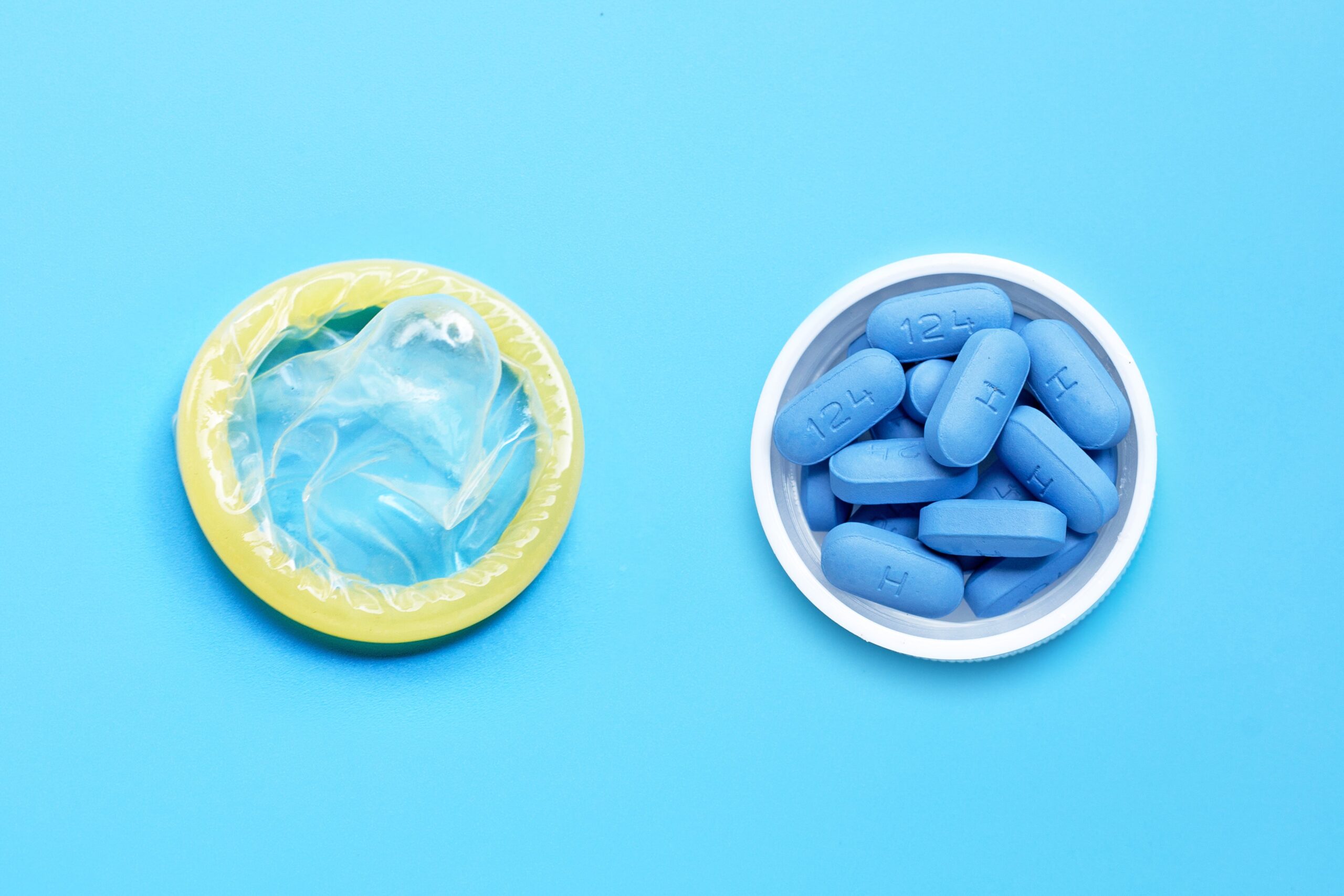We’ve talked about PrEP in the past and how it’s a good defense against HIV. (Check out our article on PrEP if you haven’t yet.)
But, for all our friends who take PrEP, you can take your safety up another level by using condoms.
What is PrEP and how is it different from using condoms?
Before we further discuss the benefits of using condoms and PrEP together, we need to have a clear understanding of the two.
“PrEP is a pharmacologic intervention,” says Noriel Calaguas, an HIV counselor and a trustee of the Philippine Society of Sexual and Reproductive Health Nurses. “[It] works by preloading a person’s body with bioactive molecules that target the copies of HIV even before they begin hijacking any of the CD4 cells.” This ensures that HIV wouldn’t be transmitted at all.
Condoms, on the other hand, are a type of barrier contraceptive that keeps seminal fluid from entering a person’s body.
“Before PrEP, condoms have long been the standard for the prevention of HIV transmission, especially if abstinence is not a viable option,” Calaguas said.
Why is it good to use condoms while taking PrEP?
So, if PrEP already effectively prevents HIV transmission, why still use condoms?
PrEP is great against HIV, but that’s not the only sexually transmitted infection (STI) known to man. That’s where condoms come in. Since condoms act as a physical barrier, they also serve as a good defense against other STIs like gonorrhea, chlamydia, syphilis, and herpes.
“PrEP offers very effective prevention against HIV with very little risk for side effects. Meanwhile, condoms [can] protect against other sexually transmitted infections,” Calaguas explained. “Using condoms while taking PrEP [gives] individuals the benefits of both interventions.”
But don’t just take our word for it. We asked a couple of our friends who regularly use condoms even while still on PrEP.
Jean-Paul, 25, has been in an open relationship for a few years now. In 2018, he contracted gonorrhea after a casual hook-up with someone who wasn’t his boyfriend. “I got it from not wearing condoms and from being mostly young, stupid, and really unaware,” he said. He started using condoms with PrEP after that.
“PrEP alone can’t prevent other STIs,” Jean-Paul added. “To maximize protection, one should always use condoms, get tested regularly, and use PrEP in accordance with a counselor’s advice. I even know some friends who use condoms not only during penetrative sex, but even during oral.”
Kaidan, also 25, had a similar experience. “I started having anxiety and panic [attacks] whenever I went on a sex date,” he said. That’s why even when he started taking PrEP, he chose to protect himself more by using condoms whenever he has sex.
Where can we get PrEP and condoms?
You can get PrEP from many social hygiene clinics in select regions in the Philippines, but it isn’t always free.
“PrEP is currently available to most at-risk populations through several DOH-accredited HIV facilities in Metro Manila, Central Luzon, and Central Visayas,” Calaguas said. “[But] there are [already] national efforts to improve the accessibility and availability of PrEP to [all] Filipinos.”
There are also several NGOs like HASH; the SAIL Clinics in Makati, Trece Martires, and Calamba; and LoveYourself that offer PrEP services. These organizations also specialize in HIV counseling and treatment.
While Kaidan gets PrEP “for free at the Luntiang Silong social hygiene clinic in Bulacan Medical Center,” Jean-Paul gets his from “Klinika Bernardo in Cubao, a social hygiene clinic funded by the Quezon City local government. I also get PrEP and condoms from HASH.”
On the other hand, condoms are available in most pharmacies, convenience stores, and online shops.
Thanks to new medicine and PrEP, the discussion on HIV and STIs shouldn’t be a big, scary topic anymore, especially in this day and age. There are many practices and technologies that can protect us against STIs. But the best place to start is by having an open mind.
Aside from taking PrEP and using condoms, getting yourself tested regularly is also a vital habit to develop. “Knowing your status is an empowering feeling,” says Calaguas. Indeed, knowing and understanding your body and health allows you to know what you can and shouldn’t do.
It doesn’t hurt to have all these extra layers of safety, after all.
Sources:
https://endinghiv.org.au/blog/prep-and-condoms/
https://loveyourself.ph/hiv-prevention/
https://www.webmd.com/sex/birth-control/birth-control-to-prevent-stis-and-pregnancy



